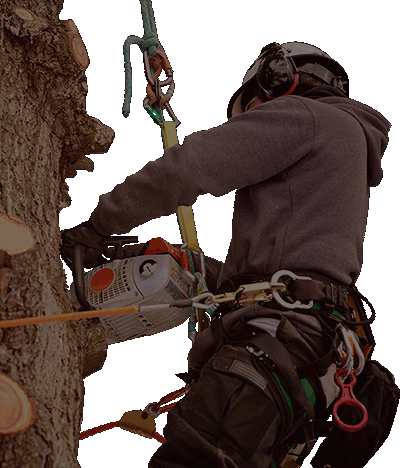
Full canopies, plump fruit, thick bark—all these things describe a healthy tree. But what happens when one is missing?
If your Spartanburg tree is missing chunks of bark, it may not look so hot.
If you spot peeling bark on your tree, help it out by learning about the causes—and solutions—below.
Why is my Spartanburg tree losing its bark?
Usually, it’s normal for a Spartanburg tree to lose bark. For some species, like sycamore, silver maple, and birch, shedding large chunks of bark is just one of their charms! Other trees, like oak, pine, ash, and maple, develop from the inside out, so the older bark on top chips away to make room for new bark.
As long as there’s healthy bark underneath the peeling layers, your Spartanburg tree is OK. But if you see these other signs, your Spartanburg tree needs a bit more help:
- Bark falls off after frost, which usually happens on the tree’s south or southwest side. Any sudden swing in temperature can make Spartanburg trees shed bark and crack under stress.
- Bark falls off after excessive heat, which, like frost damage, strips bark down to the wood.
- Bark falls off an unhealthy tree, which means you’d see other signs of stress such as cankers, sap, or dead leaves and twigs.
If bark is falling off my tree, is it dying?
Sadly, there’s no easy yes or no to this question. But, if the Spartanburg tree appears overall healthy, there’s a good chance it’s just peeling for growth. If your Spartanburg tree lost bark after an unusual weather incident, you can usually save it with the below steps! The biggest question is if you spot other worrisome signs that point to other bigger problems.
What to Do About Pine, Maple, Oak or Ash Tree Bark Falling Off
If bark is peeling with no other symptoms, it’s likely because of weather stress. Stressed Spartanburg trees love water and mulch! So, hydrate the Spartanburg tree when its soil is dry and apply organic mulch in spring and fall.
If your Spartanburg tree looks unhealthy, give it a closer look. A host of Spartanburg tree pests and diseases can affect your ash, pine, oak or maple. There’s the infamous EAB that burrows underneath ash Spartanburg tree wood and the smooth patch disease, a fungus that attacks the outer layer of oak bark.
If you find any signs of pest or disease—sawdust, oozing cankers, dead leaves, or a fuzzy fungus—have a professional arborist check it out. He’ll let you know if you can treat the problem or if you need to remove it to keep other plants on your property out of harm’s way.






